Morgan State Comes Full Circle
Jared Taylor, American Renaissance, October 23, 2023
Subscribe to future audio versions of AmRen articles here.
In April, Morgan State University, the oldest black university in Maryland, announced an important blow against historic racism: It tore down what it called a “spite” wall that white neighbors built 80 years ago to keep out the black college students. On October 10, just six months later, Morgan State reversed course and said it would build a new wall between itself and the neighborhood — though it later insisted it was to be a fence and not a wall.
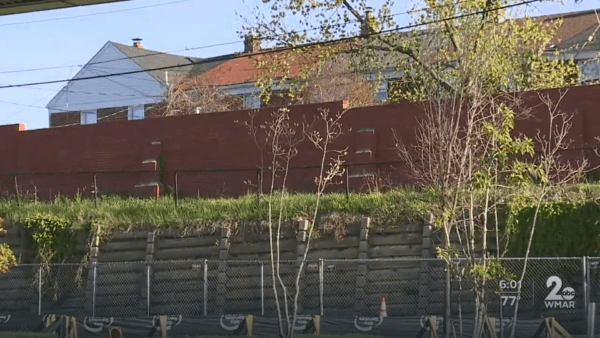
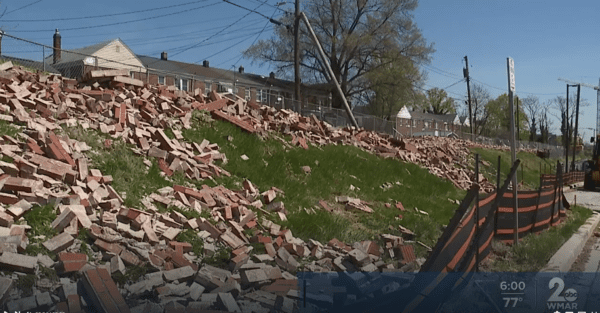
What caused this embarrassing about face? The wall-building announcement came just one week after a wild, on-campus shooting that injured five people, including four students.
Morgan State has a colorful history of killings, including a macabre case of cannibalism by the son of a professor, so President David Kwabena Wilson finally decided the campus had to protect itself from the community. Unfortunately, by then, the “spite” wall had come down.
The perps are always black. The campus sits at the western edge of the Lauraville neighborhood of Baltimore, which is listed as 38 to 69 percent black, and right next door is Northwood, which is 88 to 97 percent black. Just like the old wall, the new one will keep out black people. Whether Morgan State is walled out or walled in, the problem is the same.
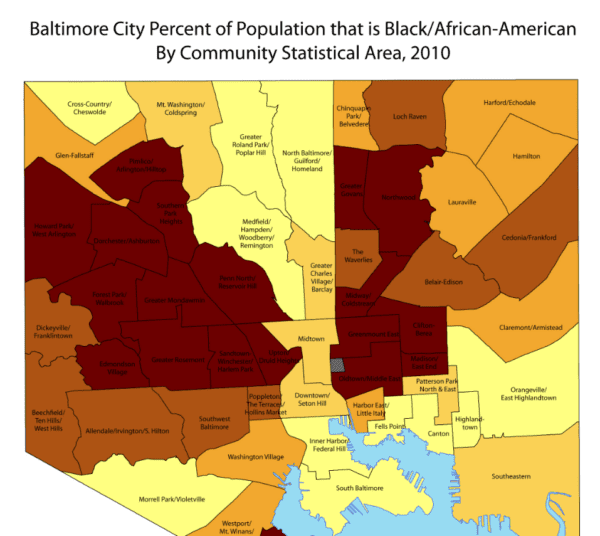
How it all started
Morgan State University was founded by white people in 1867 as the Centenary Biblical Institute, a Methodist seminary to educate black preachers. In 1890, it was renamed Morgan College in honor of its first chairman of the board, Rev. Lyttleton Morgan, the white man who donated land for the campus. The Morgan State website says almost nothing about him. Maybe best not to look too closely at any man from that era. At best, he was a “white savoir;” at worst, a full-blown white supremacist.
In 1915, Andrew Carnegie, another white savior, gave the school $50,000, which it used to buy its current Lauraville location in 1917. This led to a headline in the Baltimore Sun of May 2, 1917: “Fights Negro Invasion.” The article noted that “Lauraville has blood in its eye for any invasion of its 99 per cent pure white community by a negro institution, colony or settlement of any kind or character.”
The community sued in circuit court, on the grounds the college would be a “public nuisance.” The whites lost, and sued again in the Maryland Court of Appeals. In Diggs v. Morgan College, the court ruled that “it is clear that the improvement of land as a colored residential neighborhood is not of itself a public nuisance. It may or may not become such . . . ,” thus leaving open the possibility. In any case, Carnegie’s money built the college.
Apparently, after several decades, the people of Lauraville decided that whatever the court had said, blacks were a public nuisance, and built the wall to keep them out. Some sources say it went up in 1939, others, 1941 or even 1942.
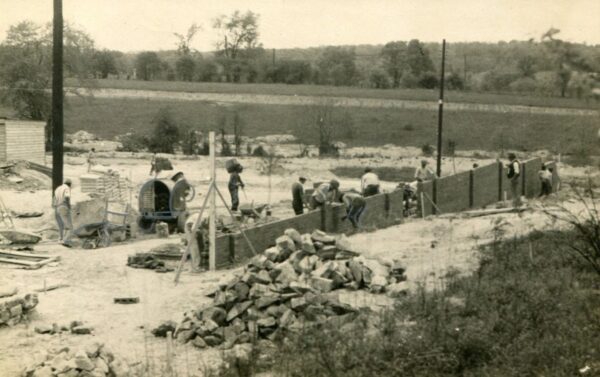
Credit: Morgan State University
Of course, “99 per cent pure” Lauraville is long gone, and one wonders why Morgan State waited so long to pull down the wall. Parts will be kept by the School of Architecture as a memorial to the wickedness of white people.
This was a moment of great satisfaction for President David Kwabena Wilson: “It feels almost like a poetic justice,” he said. “It’s a full circle moment for the community and for the University.”
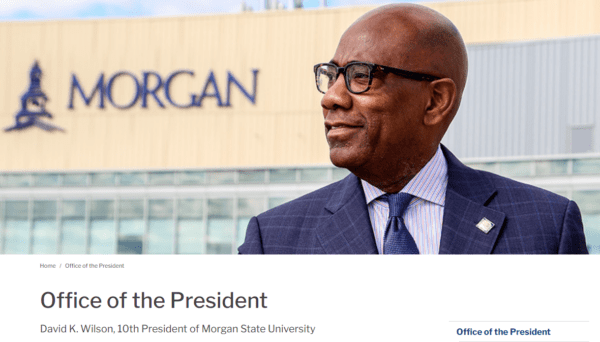
Little did he know another full-circle moment was just four months away.
The catalyst was a shooting on October 3 — homecoming weekend — when at least two men started blazing away, and hit four men and one woman. All survived. Four of the victims were Morgan students. Gunshots broke out during the packed coronation ceremony of the homecoming king and queen. All further homecoming events were canceled.
The shooters were not Morgan students. One was a 17-year-old boy who has been arrested, but 18-year-old Jovan Williams was still on the loose, 20 days later at press time.

This was the third year in a row that Morgan State celebrated homecoming with gunfire. Last year, a 20-year-old man — not a student — was shot. President David Wilson reported the incident to the campus community by email. He first complained about “the deplorable condition the grounds were left in,” adding, “The amount of garbage strewn across the campus’ landscape, despite having available receptacles for use throughout, was disheartening.”
After he got that off his chest, the president got around to an apparently less important matter: “On top of the conditions of the grounds was the unfortunate and unwelcomed news of a shooting on campus outside of the University Student Center.” He then added interesting commentary: “Morgan’s homecoming . . . is not about the social media bragging rights that have engulfed the HBCU world about who has the most ‘lit’ homecoming. This is not a space to which Morgan aspires.”
The Urban Dictionary defines “lit” as “when something is turned up or popping,” as in “Daquan: Yes, that s**t was lit.” Gunfire and mountains of trash are, presumably, “lit.”
Homecomings are frisky. In an article about the most recent shooting, the New York Times understatedly explained that “at historically Black colleges and universities, homecoming is an important tradition that brings together generations of students and alumni.”
In 2021, it was a student who shot up homecoming. Marcellus Walls, an 18-year-old freshman from Washington, DC, got into an argument with a classmate and settled it with a pistol.

He was easy to catch because of a distinctive neck tattoo that was caught on video, but a brief news item a year later reported that the Baltimore prosecutor had dropped all charges, “citing the inability to locate the victim and another key witness.” The victim was also a student at Morgan. How did he and the other key witness disappear? But with that, Marcellus Walls disappears from the internet.
In that year’s message to the community, President Wilson was pleased to report that aside from the shooting, homecoming had been “otherwise peaceful.”
Morgan State, SAT range of 850 – 1090, is not always “otherwise peaceful.” Last year, a 21-year-old sophomore, Chase Marco Wilson, sold marijuana to a black 19-year-old security guard. The transaction ended with Mr. Wilson shooting the security guard several times in the head, killing him.
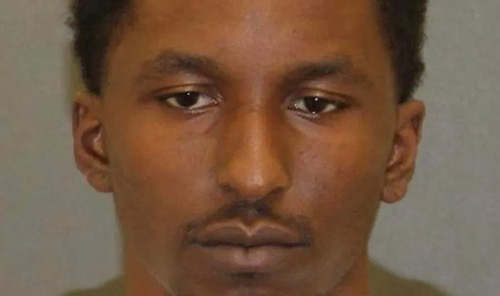
Chase Marco Wilson
This summer, Mr. Wilson was convicted of second-degree murder. He faced a possible 60 years in prison, but this killing by a Morgan State University sophomore attracted so little interest, there was no report on his sentencing.
The case of Morgan student Alexander Kimanthi Kinyua got more attention. He came to America as a child from Kenya and became a US citizen after his father got a job teaching at Morgan State. In December 2011, he lost his temper in a campus media lab; he punched eight to 10 holes in the wall and smashed several computers. His supervisor told the police he was worried he could “have a Virginia Tech on my hands.” He was referring to Sueng-Hui Cho, a V-Tech student who killed 32 people and wounded 17 more in a 2007 mass killing.
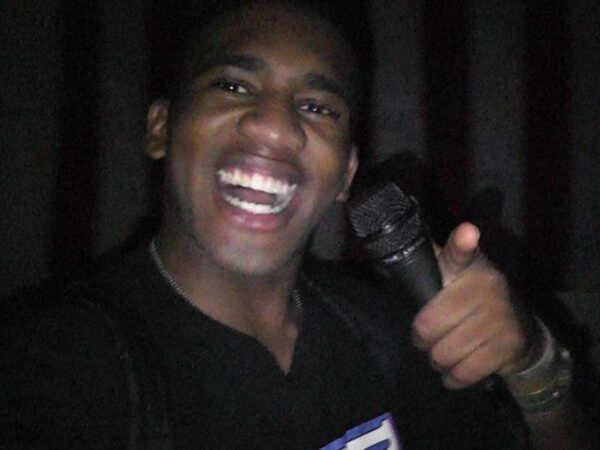
Alexander Kimanthi Kinyua in happier times.
The university did nothing about Mr. Kinyua, and the next May, six months later, he ambushed a fellow Morgan student, Joshua Ceasar, with a baseball bat wrapped in barbed wire. Mr. Ceasar spent 10 days in the hospital and lost sight in one eye. Mr. Kinyua was arrested and charged with first degree assault and excessive endangerment of life, but his professor father scraped up $220,000 and bailed him out.
A few days later, Mr. Kinyua killed his roommate, 37-year-old Kujoe Bonsafo Agyei-Kodie, who was a doctoral student from Ghana, and ate his heart and part of his brain.
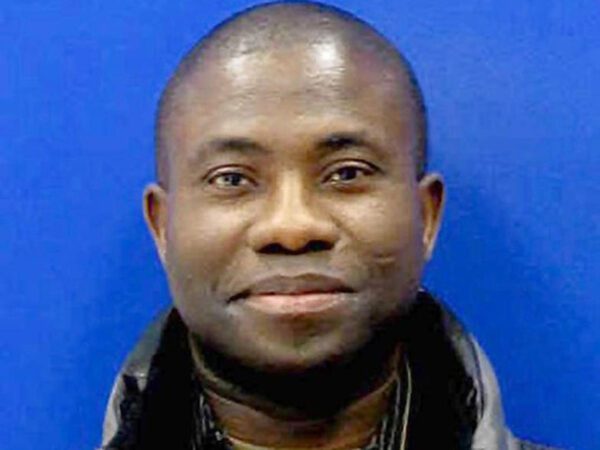
Kujoe Bonsafo Agyei-Kodie
Mr. Kodie, the victim, was in deportation proceedings for sex offenses, and was living in the Kinyua home with Professor Kinyua and the family. The victim’s hands and head were found in the basement, with other parts left elsewhere. The younger Kinyua was found incompetent to stand trial, and is locked up in an asylum.
Joshua Ceasar, who lost his eye in the baseball-bat attack, sued Morgan State, claiming that Mr. Kinyua was “a foreseeable danger” and should have been locked up. His lawyer claimed that “he [Kinyua] was walking around campus half-naked with a samurai sword, he was talking about human sacrifices,” adding that the man was still on campus only because his father was a professor. Morgan State settled for $185,000.
I have not been able to locate any statements from the otherwise loquacious President David Kwabena Wilson on this affair. The father, Antony Kinyua, still teaches physics at Morgan State, where his research interests are listed as “Nuclear and related analytical techniques in environmental pollution monitoring.”
Back to the problem of Morgan State’s security. The chief of the campus police (MSUPD) is under a cloud. After this year’s homecoming shootout, the officers issued a formal 11-page letter of complaint, accusing Chief Lance Hatcher of covering up officer and equipment shortages. They say he claims there are “60+ officers,” but the cops themselves say there are only 27 to patrol the 187-acre campus, with only four or five on duty on weekends. They say they have only four patrol cars, two of which are constantly breaking down.
The officers say the chief and his staff are “verbally abusive.” Officers complain of a “hostile environment and overall lack of professionalism,” as well as “blatant violation of labor and ethical standards.” They say that if the entire command staff isn’t fired, there could be “a mass exodus of police personnel.”
The administration reports that it is “committed to conducting a full investigation of all allegations pertaining to the MSUPD and its operations.”
In 2020, Jeff Bezos’s ex-wife, white savoir Mackenzie Scott, gave Morgan State $40 million — double the university’s entire endowment. She said she was impressed by “the university’s efforts to promote racial justice.” Maybe the university should spend a little less on “racial justice” and buy its cops a new squad car.
No doubt the new wall will help the MSUPD keep the riff raff out. There are to be guards at every entrance — assuming MSUPD has enough officers.
In any case, no one seems to notice the irony of tearing down one barrier only to build another. What was it those white people said 100 years ago when they sued to keep Morgan State out of Lauratown? I believe it was that blacks would be a “public nuisance.”















